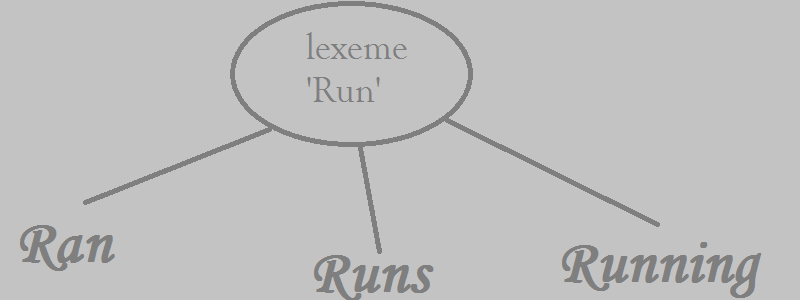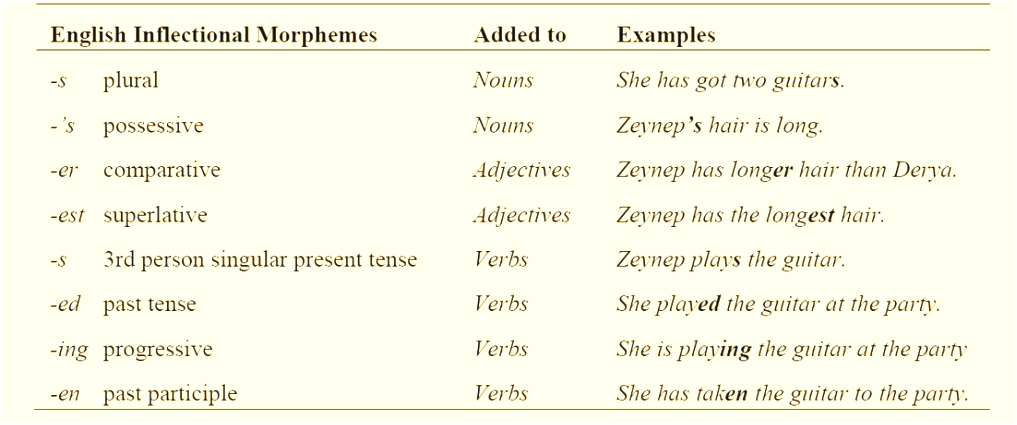3.MORPHEMES AND TYPE OF MORPHEMES
MORPHEME
Morphemes video Morphemes can be defined as the smallest meaningful constituents of a linguistic expression. Is the smallest unit of meaning in a language.
LEXEME A lexeme is a word in an abstract sense. Lexemes can be thought of as sets of word-forms, and every word-form belongs to one lexeme. That is, the part that does not alternate in the whole set of words in the same family Example:
Types of morpheme FREE MORPHEME Morphemes that can stand alone to function as words are called free morphemes. They comprise simple words and compound words. That is to say, can stand alone as own word For example: flower, sun, bake, cook, etc.
BOUND MORPHEME Bound morphemes are those morphemes that need to be associated with a word. Cannot stand alone, these words need a derivational or inflectional morpheme For example: Suffixes: less, ly, ness, etc. Prefixes: pro, un, in, etc.
DERIVATIONAL MORPHEME Can occur only in combination they are parts of a word. They may be lexical morphemes (such as {clude} as in include, exclude, preclude) or they may be grammatical (such as {PLU} = plural as in boys, girls, and cats).” Derivational morpheme changes the meaning of the word or the part of the speech For example:
INFLECTIONAL MORPHEME: Inflectional morphemes represent relationships between different parts of a sentence. For example, -s expresses the relationship between the verb and the third-person singular subject; -ed expresses the relationship between the time the utterance is spoken (e.g., now) and the time of the event (past). These morphemes don’t change the meaning of the word or change the grammatical category of it.
|






Comentarios
Publicar un comentario